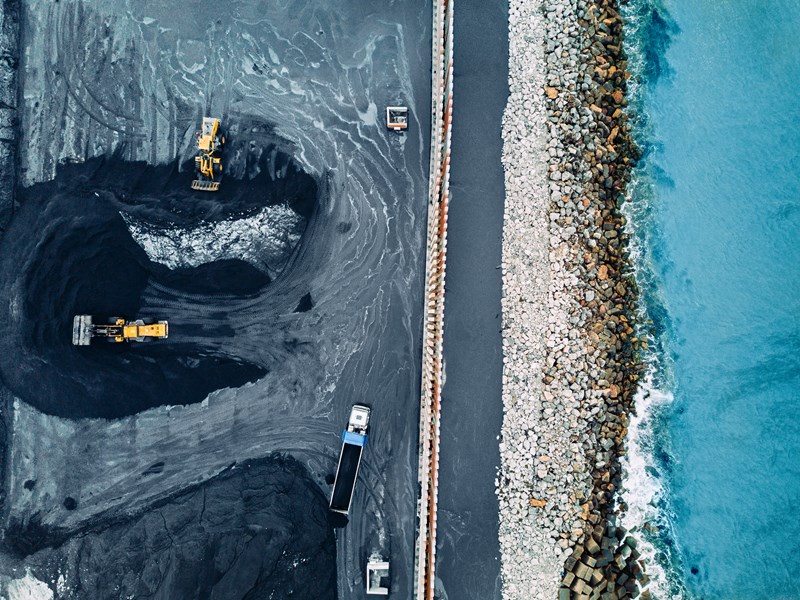Metals and mining: an industry at a crossroads
Will coronavirus reverberations provide an opportunity to (re)align with stakeholders?
2 minute read
Julian Kettle
Senior Vice President, Vice Chair Metals and Mining

Julian Kettle
Senior Vice President, Vice Chair Metals and Mining
Latest articles by Julian
-
Opinion
Metals investment: the darkest hour is just before the dawn
-
Opinion
Ebook | How can the Super Region enable the energy transition?
-
The Edge
Can battery innovation accelerate the energy transition?
-
Featured
Have miners missed the boat to invest and get ahead of the energy transition?
-
Featured
Why the energy transition will be powered by metals
-
Featured
Could Big Energy and miners join forces to deliver a faster transition?
The coronavirus pandemic has had a massive impact on every part of the global economic system. In response, unprecedented stimulus measures have boosted many countries’ debt-to-GDP ratios to levels not seen since WWII. But even as China emerges phoenix-like from the still-smouldering recessionary ashes it’s clear that the absolute level of global economic activity has contracted.
Faltering recoveries, second waves of the pandemic and an ill-tempered US election mean that no-one can yet claim to understand the true long-term social, political and economic ramifications of the last nine months.
How has a year of unprecedented challenges affected mined commodities? We’ll be exploring this in detail at the upcoming LME Week Forum. Fill in the form for a complimentary copy of our pre-event report, which includes outlooks for aluminium, copper, gold, lead, nickel, zinc, lithium and cobalt. Or read on for a short extract.
Consumption has been knocked, the supply response has been sluggish, but there is a gold lining…
Even assuming a smooth economic recovery as we move into the new year, consumption will suffer well into 2021. Supply has not yet fully adjusted to a lower demand trajectory and unless the necessary correction is forthcoming the ramifications are obvious. Stocks will continue to rise with an inevitable structural effect on prices.
As our briefing indicates, this is the outlook for every single metal – apart from one. All this uncertainty is great for gold, which has outperformed all other metals. But even then, questions remain as to the fair value for that which glistens. What’s more, and with obvious irony, there is concern that the gold industry will not be able to deliver enough supply to capitalise on the current buoyant prices following a decade of underinvestment in exploration and development.
… and an (EV) light at the end of the tunnel
It’s easy to focus on the negative effects of Covid-19. But there is a positive story on the horizon. Governments are using their stimulus packages to either kick-start or accelerate their decarbonisation journeys. Europe is leading the “green” charge, closely followed by China even while the US retreats further from global environmental leadership – all eyes are on the election.
One can argue about both the pace and scale of the energy transition but the criticality of metals to its realisation is without question. Put simply, the energy transition starts and ends with metals. If you want to generate, transmit or store low/no-carbon energy you need aluminium, cobalt, copper, nickel and lithium.
So, is the energy transition a sure bet for miners and their backers? Well, we would argue that it is – but not just yet. The fundamental question that must be answered first is: where will the investment to meet this demand come from?
Major investment is needed over the next 15 years in those five key commodities – double what was invested over the preceding 15. And the fundamentals for a number of metals are poor and deteriorating, with prices for most well below long-term incentive levels. Understandably, investors are not totally convinced that the road to recovery is assured or of the sunlit uplands that the energy transition represents. Long-dated returns from investing in mining/processing sit uneasily against the need for certainty of regular dividend payments. This severely hampers the ability of boards to undertake the long-term decisions needed to develop the supply that high-growth energy transition related commodities demand.
This poses challenges – and not just for the consumers of these metals who will rely on predictable, affordable and, for some, ethically-sourced supply. If producers cannot meet their consumers’ needs a time will surely come where they find ways to innovate out such unreliable raw components of their supply chain.

Is vertical integration the answer?
Elon Musk appears to have fired the first salvo in the discussion around the need for vertical integration to secure critical minerals. The implications of his promise of a “giant contract” to companies that could mine nickel “efficiently and in an environmentally sensitive way” are clear.
However, is this clarion call too late? China has not stood idly by over the last 20 years and continues to forge ahead in its mission to secure its raw material supply chain. This was both a pragmatic and visionary move that is ultimately aimed at reducing its reliance on non-controllable imports. China, of course, has the advantage of a greater appetite for risk and lower returns, and is also willing to operate in jurisdictions that many western companies cannot or will not due to ESG and sovereign risk issues. Perhaps governments that are keen to promote the energy transition and the electrification of transport need to take a leaf out of China’s book and intervene to de-risk or underwrite projects in jurisdictions that have critical raw materials but are currently uninvestable?
Decarbonisation could be about to accelerate
But the energy transition isn’t just a supply story. Producers are becoming increasingly carbon conscious, with many setting (albeit long-dated) targets for net zero carbon. There have been several high-profile majors offloading their high carbon assets, and/or acquiring low carbon replacements. It isn’t even just about portfolio balance. The green agenda will have a profound impact on the way these companies extract and refine metals, with lower carbon operations an increasing priority.
This, in part, explains the resurgence of interest in the collection and the use of scrap. Increasing our reliance on secondary metal will help meet sustainability goals, reduce capital demands as well as reducing the carbon footprint of production. However, scrap collection and sorting remains problematic and secondary metal cannot be used in a number of the applications driving the energy transition – such as electricity cabling and wire that require primary metal.
Green energy procurement and generation is to the fore and portfolio optimisation is a must-have on any board agenda now. It feels like the tipping point is imminent and we expect carbon to become a non-negotiable component of any AGM, just as safety did in the 1990s.
The industry is at a crossroads
And so the industry finds itself at a crossroads it has been at before. The short-term outlook is generally poor with deteriorating market fundamentals – albeit as a result of a global pandemic, rather than an overexuberant investment in supply. Shareholders focusing on short term returns are inhibiting Boards’ abilities to participate in the long term demand growth.
Can producers position themselves for investment in new supply, not just to offset mine depletion but also for growth in “conventional” and energy transition markets? Can they decarbonise and navigate the increasingly complex minefield of the ESG landscape and deliver the returns expected?
Miners are adept at juggling conflicting demands. The question is whether they are adept enough to manage this perfect storm of problems and opportunities.
A closer look at mined commodities
How are geopolitics affecting the world of mining? Read the full report where Hugo Brennan, Verisk Maplecroft, provides a unique insight into how China’s relationship with the world appears to be changing as we move through the pandemic. The report also includes a summary of Wood Mackenzie’s near-to-mid-term outlooks for the base metals, gold, lithium and cobalt.
Fill in the form at the top of the page for a complimentary copy.
Hear more from Julian Kettle on the C.O.B. Tuesday podcast
Julian joined Tudor, Pickering, Holt & Co.'s C.O.B. Tuesday podcast to talk about what it will take to deliver the mined commodities needed to drive the energy transition. The podcast's expert guests also included:
- Dr. Roderick Eggert, Foundation Chair in Mineral Economics, Colorado School of Mines
- Frank Fannon, Assistant Secretary for the Bureau of Energy Resources, US Department of State
- Mark Mills, Senior Fellow at the Manhattan Institute and Strategic Partner of Cottonwood Venture Partners

Julian Kettle, Vice Chairman, Metals & Mining







